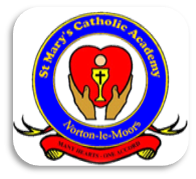Key Concepts in History
HISTORY - Subject Specific Key Concepts
|
Subject |
Concept lens’ |
Explanation |
|
HISTORY |
Chronology |
Chronology is the study of the big picture of events across time – also referred to in the National Curriculum as ‘a chronological framework’ and ‘the long arc of development’. This means that children gradually build up a sense of how periods and events fit together in sequence. In this concept, it is also necessary to develop understanding of historical language and terminology, the idea of sequence, duration and the sense of period. |
|
Interpretation |
This concept helps children to develop the understanding that history is not just about knowing the events of the past but also the way such events are presented. These presentations of the past come in a variety of forms and children should be able to reflect purposefully on their worth. In this concept, children will be able to develop their skills of historical enquiry, where they will use the same methods as a professional historian when investigating an aspect of history. Children will develop their understanding of historical enquiry by asking and framing question; undertaking research; making judgments and effectively communicating answers. |
|
|
Continuity and change |
There were lots of things going on at any one time in the past. Some changed rapidly while others remained relatively continuous. We can look at these at face value and consider things that were continuous and explain why, and things that were changing and explain why. Another key aspect of this concept is to challenge these ideas and look for change where common sense suggests that there has been none and looking for continuities where we assumed that there was change. We can then use these to judge comparisons between two points in the past, or between some point in the past and the present. We can then evaluate change over time using the ideas of progress and decline. |
|
|
Cause and consequence |
This concept considers the ‘how and why’ of history. The causes look for ‘what were the actions/beliefs/circumstances…?’ that led to a change or event that we examine, and then the consequences of these. |
|
|
Similarity and difference |
Similarity and difference is based upon an understanding of the complexity of people’s lives, differing perspectives and relationships between different groups. Asking how similar or different allows pupils to draw comparisons across people, their perspectives, motivations and actions as well as across time and space, helping children to develop a greater understanding of modern global society. Similarity and difference is important for helping children move beyond stereotypical assumptions about people in the past and to recognise and analyse the diversity of past experience. |
|
|
Significance |
Some events, ideas or people have had such a long-lasting impact on the world that they could be significant. Not all things are significant for the same reasons as other things and in this concept, children can see the range of reasons why certain people, places and events were significant then and now. It includes assessing and evaluating the impact that they had on a period of time. |
